In a world where culinary experiences are increasingly valued, the kitchen appliance market has seen a surge in innovation. Among these innovations, the panini press has emerged as a staple for both casual cooks and gourmet enthusiasts. As the demand for high-quality kitchen gadgets grows, the NSF certification has become a beacon of trust and quality. This article delves into the world of NSF certified panini presses, exploring their features, consumer benefits, and the ripple effect they have on the industry.
The Rise of Panini Presses in Western Markets
The surge in popularity of panini presses in Western markets has been nothing short of a culinary revolution. Once a niche item found in specialty shops, these compact, versatile appliances have now become a staple in many modern kitchens. The reasons for this meteoric rise are multifaceted, intertwining convenience, culinary innovation, and the growing trend towards home cooking.
With the rise of food blogs and social media platforms, home chefs have been inspired to experiment with recipes and cooking techniques. Panini presses offer a unique way to create pressed sandwiches that are not only delicious but also visually appealing. The ability to easily achieve that perfect grill mark and melt cheese to gooey perfection has made these devices a favorite among sandwich enthusiasts.
The convenience factor cannot be overstated. In a fast-paced world where time is often a luxury, panini presses provide a quick and efficient solution for a satisfying meal. They eliminate the need for a grill or outdoor cooking, allowing for the creation of gourmet-quality sandwiches in the comfort of one’s own home. This convenience has certainly contributed to the growing demand for panini presses.
Culinary innovation has also played a significant role in the rise of panini presses. Manufacturers have been quick to adapt and improve upon the original designs, offering a variety of features that cater to different tastes and preferences. From adjustable heat settings to non-stick surfaces, these appliances have evolved to become more user-friendly and versatile.
The European market has been particularly receptive to panini presses, with a strong emphasis on artisanal and homemade food. The continent’s culinary heritage is steeped in the tradition of preparing fresh, high-quality meals, and panini presses fit seamlessly into this ethos. The popularity of panini shops and street food vendors has also helped to propagate the love for these delicious sandwiches, further boosting the demand for home panini presses.
In the United States, the trend towards healthier eating and the convenience of meal prep have also contributed to the rise of panini presses. The ability to control the ingredients and cooking process means that consumers can enjoy a homemade sandwich that is both delicious and nutritious. This has made panini presses a staple in the kitchens of health-conscious individuals and busy professionals alike.
Another factor that has contributed to the popularity of panini presses is the versatility of the appliance. While traditionally used for sandwiches, these devices can also be used to cook a variety of other foods, such as flatbreads, pizzas, and even some main dishes. This versatility has expanded the appeal of panini presses beyond just sandwich lovers, making them a must-have for a wide range of culinary enthusiasts.
The rise of panini presses has also been influenced by the economic landscape. As people seek more cost-effective ways to enjoy a meal, the affordability of these appliances has made them an attractive option. They are generally more budget-friendly than larger kitchen appliances and can be used to create a variety of dishes, providing great value for money.
Moreover, the emphasis on sustainability and reducing food waste has also played a role in the popularity of panini presses. By using fresh ingredients and cooking them efficiently, these devices encourage consumers to make the most of their food, reducing waste and promoting a more sustainable lifestyle.
In conclusion, the rise of panini presses in Western markets is a testament to the evolving culinary landscape. The combination of convenience, innovation, and the growing trend towards home cooking has propelled these devices to the forefront of kitchen appliances. As consumers continue to seek out versatile and efficient cooking solutions, it’s likely that the popularity of panini presses will only continue to grow.
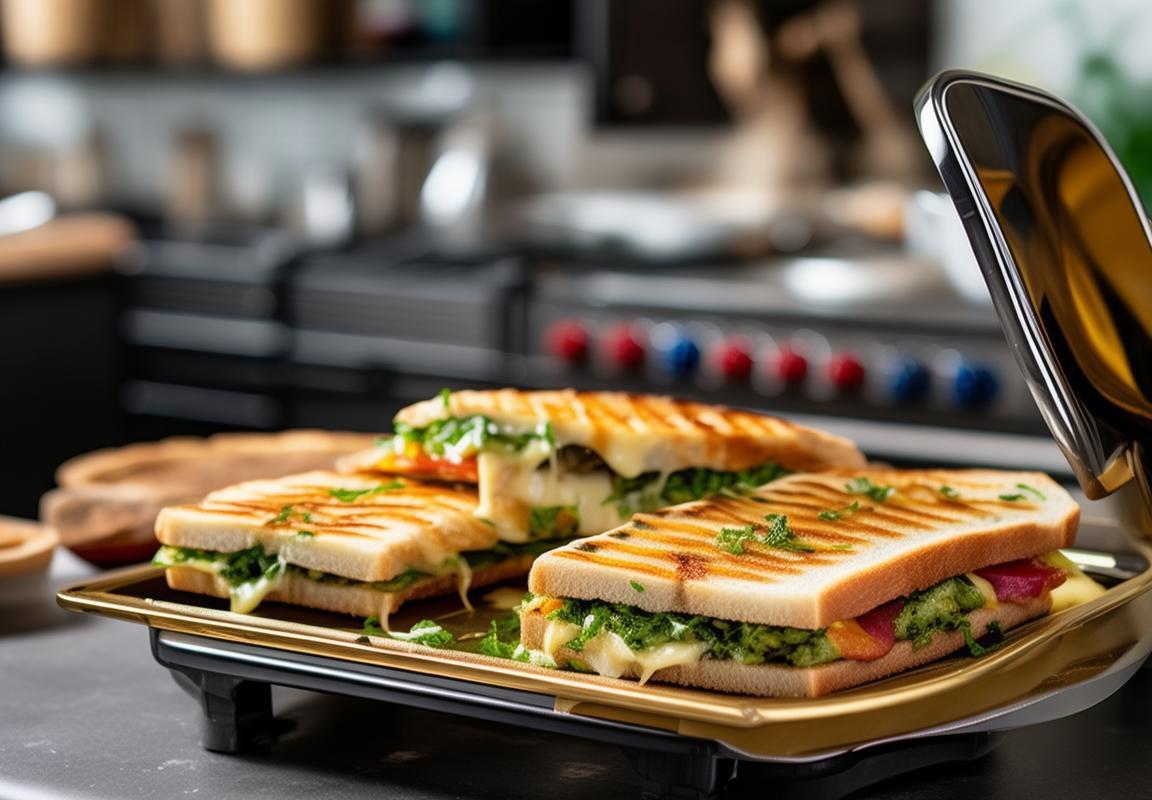
Understanding NSF Certification: A Key to Quality
In the world of kitchen appliances, especially in the bustling markets of the West, the term “NSF certified” has become synonymous with quality and reliability. Understanding what this certification entails is crucial for consumers who value the safety and performance of their kitchen tools.
The NSF, or National Sanitation Foundation, is an independent organization that sets standards for public health and safety. When a product, like a panini press, bears the NSF certification, it means it has undergone rigorous testing to meet these stringent standards. This certification is not just a mark of quality—it’s a guarantee that the product has been evaluated for its safety, performance, and compliance with health codes.
Safety is paramount, and the NSF certification process includes examining the materials used in the construction of the panini press. This ensures that no harmful chemicals or substances are present that could leach into the food. The certification also covers the electrical components, guaranteeing that the appliance is safe to use and won’t pose a risk of electric shock or fire.
Performance is another critical aspect of the certification process. The NSF tests the panini press to ensure it can achieve the desired cooking temperature consistently. This means that whether you’re making a classic Italian panini or a gourmet sandwich, the appliance will deliver the same level of heat and pressure, resulting in a perfectly toasted and melted sandwich every time.
In addition to safety and performance, NSF certification also encompasses the product’s design and ease of use. The certification process includes a thorough review of the panini press’s user manual to ensure it provides clear instructions for safe operation. The design of the appliance is also assessed to make sure it doesn’t have any sharp edges or other potential hazards.
For manufacturers, achieving NSF certification is no small feat. It requires a significant investment of time and resources. They must submit detailed documentation about their manufacturing process, including the source of materials, quality control measures, and the testing procedures they use. This transparency is a testament to the manufacturer’s commitment to producing a high-quality product.
Consumers benefit greatly from this certification. It serves as a trusted seal of approval, giving them confidence in their purchase. When they see the NSF logo on a panini press, they know that it has been independently verified to meet specific safety and performance criteria. This peace of mind is invaluable in a market where the variety of kitchen appliances can be overwhelming.
The NSF certification also contributes to the overall trustworthiness of the brand. In an era where recalls and safety concerns are common news, having a product that carries the NSF certification can set a brand apart from its competitors. It’s a statement that the company stands behind its products and is dedicated to providing the best possible experience for its customers.
Moreover, the certification is not a one-time event. It requires ongoing compliance to maintain the certification status. This means that even after the initial approval, the manufacturer must continue to adhere to the NSF’s standards, ensuring that the product remains safe and effective throughout its lifespan.
In the competitive landscape of the Western kitchen appliance market, the NSF certification is more than just a label—it’s a badge of honor. It signifies a commitment to excellence, and for consumers, it’s a key to making informed decisions about the products they bring into their homes.
The certification process also encourages innovation. Manufacturers are motivated to design and produce appliances that not only meet the current standards but also exceed them. This drive for improvement means that consumers often get access to the latest technology and the most advanced features, all while knowing that the products are safe and reliable.
In summary, NSF certification is a cornerstone of quality in the kitchen appliance industry. It’s a comprehensive assessment that touches on every aspect of a product’s safety, performance, and design. For consumers looking to invest in a panini press or any other kitchen appliance, understanding the value of NSF certification is essential. It’s a simple yet powerful way to ensure that their purchase is a wise investment in both their time and their health.
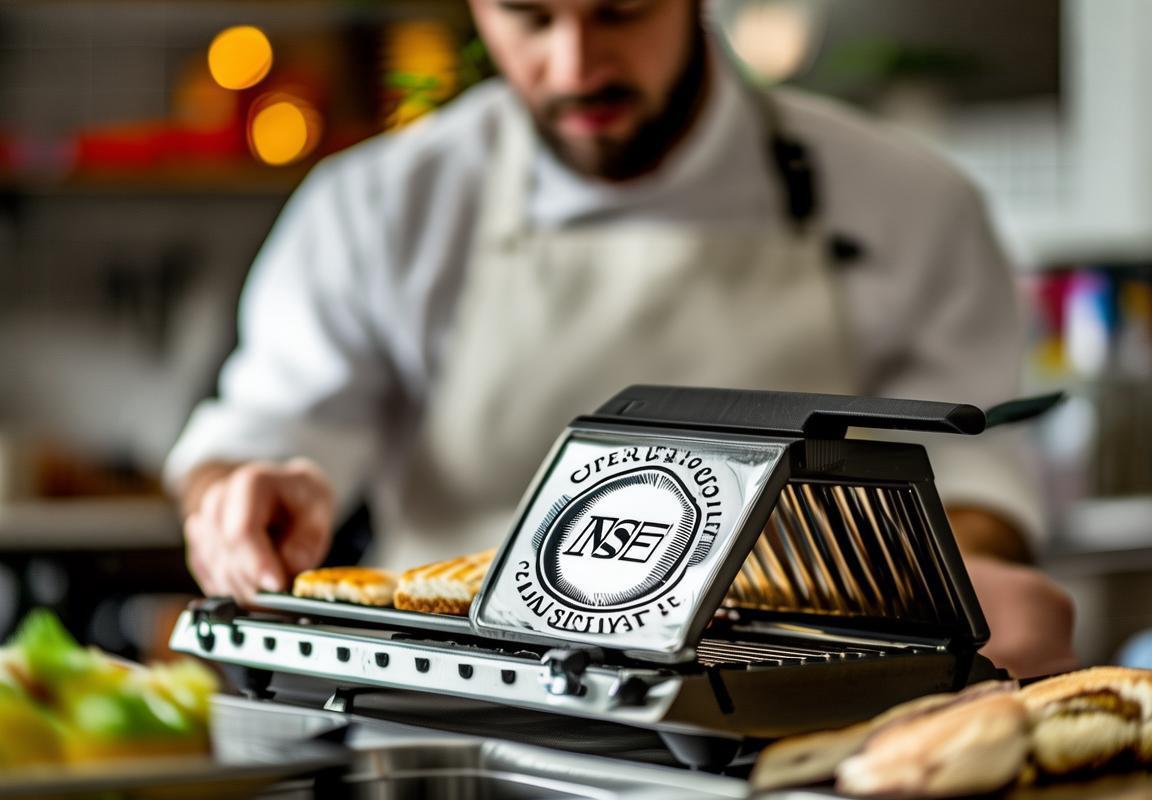
The European and American Perspectives on Kitchen Appliances
In Europe, the kitchen appliance market is characterized by a blend of traditional and modern technologies, reflecting the continent’s diverse culinary traditions and preferences. From Italy’s love for espresso machines to the Scandinavian emphasis on eco-friendly and minimalist designs, European consumers have a discerning eye for quality and functionality.
The American market, on the other hand, is a melting pot of diverse cultures and tastes, leading to a vast array of kitchen appliances that cater to everything from hearty American breakfasts to diverse international cuisines. This diversity is evident in the wide range of brands and models available, each with its unique selling points.
In Europe, the focus on craftsmanship and durability is deeply rooted in the region’s history. Appliances like stovetops and ovens are often designed with intricate details and materials that not only enhance performance but also add a touch of elegance to the kitchen. German manufacturers, for instance, are renowned for their precision engineering, producing high-quality appliances that are built to last.
American consumers, while also valuing quality, tend to place a strong emphasis on innovation and convenience. The rise of smart kitchen appliances in the U.S. is a testament to this. These devices, equipped with advanced technology, can be controlled remotely, learn user preferences, and even offer recipes and cooking tips. This blend of technology and convenience is a significant factor in the popularity of appliances like the Ninja blender or the Instant Pot multicooker.
In terms of energy efficiency, Europe has been a leader, with stringent regulations requiring appliances to meet certain energy-saving standards. This has led to the development of appliances that are not only eco-friendly but also cost-effective in the long run. European consumers are often willing to invest in higher-quality, energy-efficient appliances to reduce their carbon footprint and lower utility bills.
In the U.S., while energy efficiency is still a priority, there is also a strong focus on innovation and speed. American consumers are often looking for appliances that can multitask and save time, which is why countertop ovens and air fryers have become increasingly popular. These appliances offer a quick and easy way to prepare meals without the need for traditional ovens or deep-frying.
The European and American markets also differ in their approach to safety and certification. In Europe, safety standards are stringent, and appliances must undergo rigorous testing to meet the requirements of certification bodies like the German Technical Inspection Association (TÜV) or the British Standards Institution (BSI). Similarly, in the U.S., appliances are subject to strict safety regulations enforced by the Underwriters Laboratories (UL) and the Consumer Product Safety Commission (CPSC).
When it comes to kitchen appliances, the European and American perspectives are shaped by cultural nuances, technological advancements, and regulatory frameworks. While both regions value quality and functionality, their specific needs and preferences lead to different trends and innovations. From the sleek, minimalist designs of Scandinavian kitchens to the bold and innovative appliances found in American homes, the kitchen appliance market reflects the unique identities of these two influential consumer bases.

The Features that Set NSF Certified Panini Presses Apart
In the competitive world of kitchen appliances, the distinction between a standard panini press and an NSF certified model is as clear as day. Here are the unique features that set NSF certified panini presses apart:
The even heat distribution is a game-changer. These presses are meticulously designed to ensure that every slice of bread, cheese, and other fillings receives the same level of heat, resulting in a perfectly toasted panini every time. Unlike some cheaper models that might leave you with a hot spot or cold edge, NSF certified presses maintain a consistent temperature across the entire cooking surface.
Durability is a hallmark of NSF certified appliances. They are built to withstand the rigors of everyday use, with high-quality materials and sturdy construction. The hinges are reinforced, the surfaces are non-stick and resistant to wear, and the overall build quality speaks to a longevity that is often missing in lesser models.
Safety features are paramount in NSF certified panini presses. These models are tested to meet strict safety standards, including electrical safety, material safety, and user safety. You’ll find features like cool-touch handles and overheat protection that prevent accidents and ensure peace of mind while cooking.
The design of NSF certified panini presses often reflects a commitment to user convenience. From the non-slip base that keeps the press in place during use to the easy-to-clean surfaces, these appliances are thoughtfully designed to make the cooking experience as smooth as possible. The foldable design is another feature that saves space in your kitchen, making these presses a practical choice for small kitchens or those who prefer a clutter-free counter.
Innovation is at the heart of NSF certified models. Many come with adjustable heat settings, allowing you to tailor the cooking temperature to your preferred level of crispiness. Some even have features like a locking mechanism that ensures the press stays closed during cooking, preventing any spills or burns.
The cooking surface area is often larger in NSF certified panini presses, providing ample space for a variety of fillings and ingredients. Whether you’re making a classic ham and cheese sandwich or experimenting with gourmet options, these presses offer the versatility that casual and gourmet cooks alike appreciate.
Functionality isn’t just about cooking; it’s also about the ability to achieve different outcomes. NSF certified panini presses often come with a variety of settings or attachments that allow you to cook a range of foods, from paninis to grilled sandwiches, to even flatbreads and pizzas. This versatility is a feature that many cooks find invaluable.
Energy efficiency is another aspect that sets NSF certified panini presses apart. These appliances are designed to use energy wisely, reducing both your carbon footprint and your utility bills. In an era where sustainability is a growing concern, this feature is a significant draw for environmentally conscious consumers.
Finally, the brand reputation behind NSF certified panini presses speaks volumes. The NSF (National Sanitation Foundation) is a respected organization that certifies products for public health and safety. When you see the NSF logo on a panini press, you know that the manufacturer has gone through rigorous testing to meet these high standards. This trust factor is something that many consumers value above all else.
In summary, the features that set NSF certified panini presses apart are their even heat distribution, durability, safety, user-friendly design, innovation, versatility, energy efficiency, and the trusted brand reputation. These features make them a standout choice for anyone looking for a reliable and high-quality kitchen appliance.
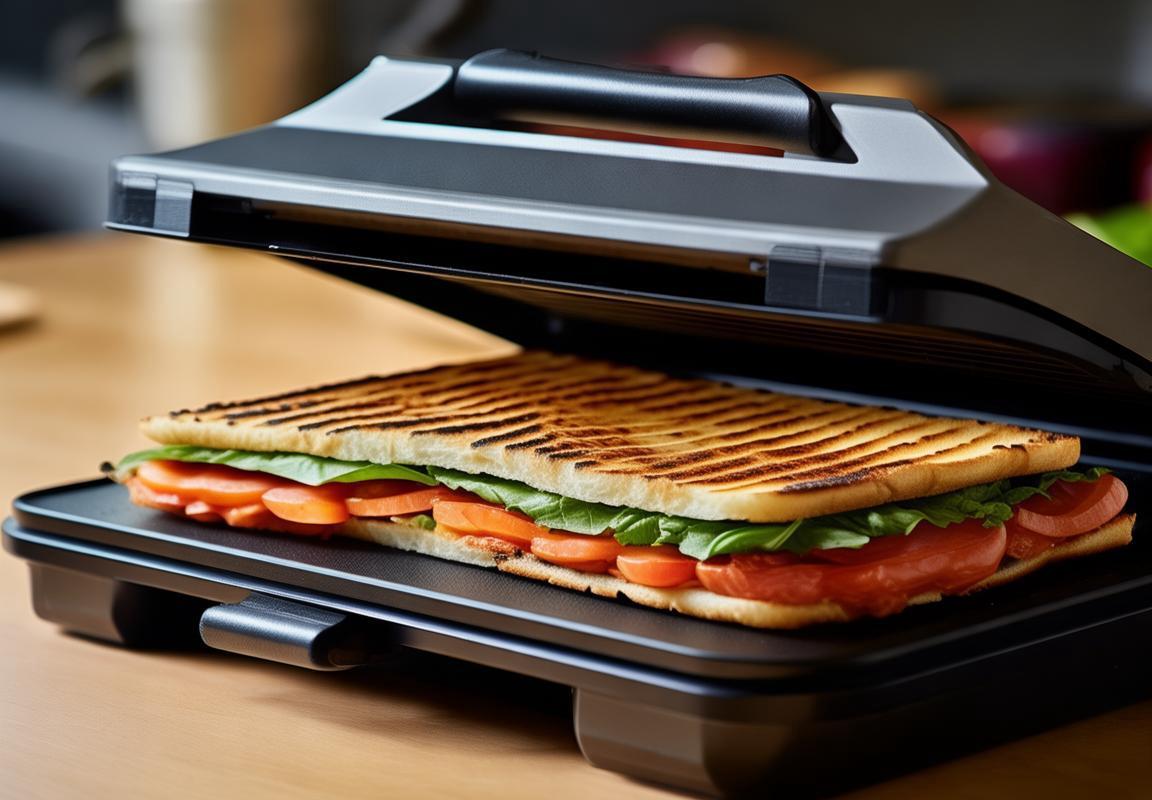
Consumer Benefits: Why NSF Certification Matters
In today’s kitchen appliance market, the presence of NSF certification on a panini press can be the difference between a product that simply meets industry standards and one that stands out as a consumer favorite. Here’s why NSF certification matters to consumers and how it enhances the overall benefits of owning an NSF-certified panini press.
Cooking with ConfidenceConsumers value the peace of mind that comes with knowing their appliances are safe to use. NSF certification ensures that a panini press has undergone rigorous testing to meet specific health and safety standards. This means that the device not only performs as intended but also poses minimal risk of electrical hazards or food contamination, making it a reliable choice for families and individuals concerned about their well-being.
Health and Hygiene StandardsOne of the primary reasons NSF certification is crucial is its emphasis on health and hygiene. The certification process includes evaluating the panini press for the presence of harmful substances that could leach into food. This not only protects consumers from potential health risks but also gives them confidence that their appliance is designed with their health in mind.
Energy EfficiencyConsumers are increasingly looking for appliances that are not only safe but also sustainable. NSF certification includes an assessment of the panini press’s energy efficiency. A certified panini press is likely to be designed to minimize energy consumption, which not only reduces utility bills but also contributes to a greener, more eco-friendly lifestyle.
Performance and DurabilityNSF certification also guarantees a certain level of performance and durability. The testing process includes assessing the panini press’s ability to consistently cook food to the correct temperature, ensuring that each press will deliver the same quality results over time. This longevity means that consumers can enjoy their panini press for years without worrying about reliability issues.
Safety FeaturesSafety is paramount in kitchen appliances, and NSF certification scrutinizes the design for safety features. This can include non-slip bases, easy-to-use controls, and protective mechanisms that prevent accidents. Consumers appreciate knowing that the panini press they choose is less likely to cause injuries or property damage.
Customer SatisfactionA panini press that meets or exceeds NSF standards is likely to be well-received by consumers. The certification is a seal of approval that can significantly enhance customer satisfaction. Knowing that an appliance has been certified by an independent third-party adds credibility to the product and often translates to higher consumer trust.
Warranty and SupportManufacturers of NSF-certified panini presses often offer extended warranties or superior customer support. This is because they have to adhere to high standards of quality and safety, which are also reflected in the after-sales service. Consumers benefit from this additional layer of protection, knowing that they can rely on the manufacturer for support when needed.
Eco-Friendly MaterialsThe use of environmentally friendly materials in the construction of an NSF-certified panini press is another aspect that consumers find appealing. From recycled plastics to BPA-free components, the certification process ensures that the appliance is built with consideration for the environment, which resonates with environmentally conscious buyers.
Ease of UseAn NSF-certified panini press is not just safe and durable; it’s also designed with ease of use in mind. The certification process includes evaluating the user interface and functionality, ensuring that the panini press is intuitive and straightforward to operate. This makes the appliance accessible to a wider range of consumers, including those who may not be as tech-savvy.
In conclusion, the benefits of owning an NSF-certified panini press are multifaceted. From enhanced safety and health standards to energy efficiency and customer satisfaction, the certification process ensures that consumers are getting a high-quality product that will serve them well over time. The peace of mind that comes with knowing your appliance has been independently verified can be invaluable, and the added features and support often make the investment in an NSF-certified panini press well worth it.
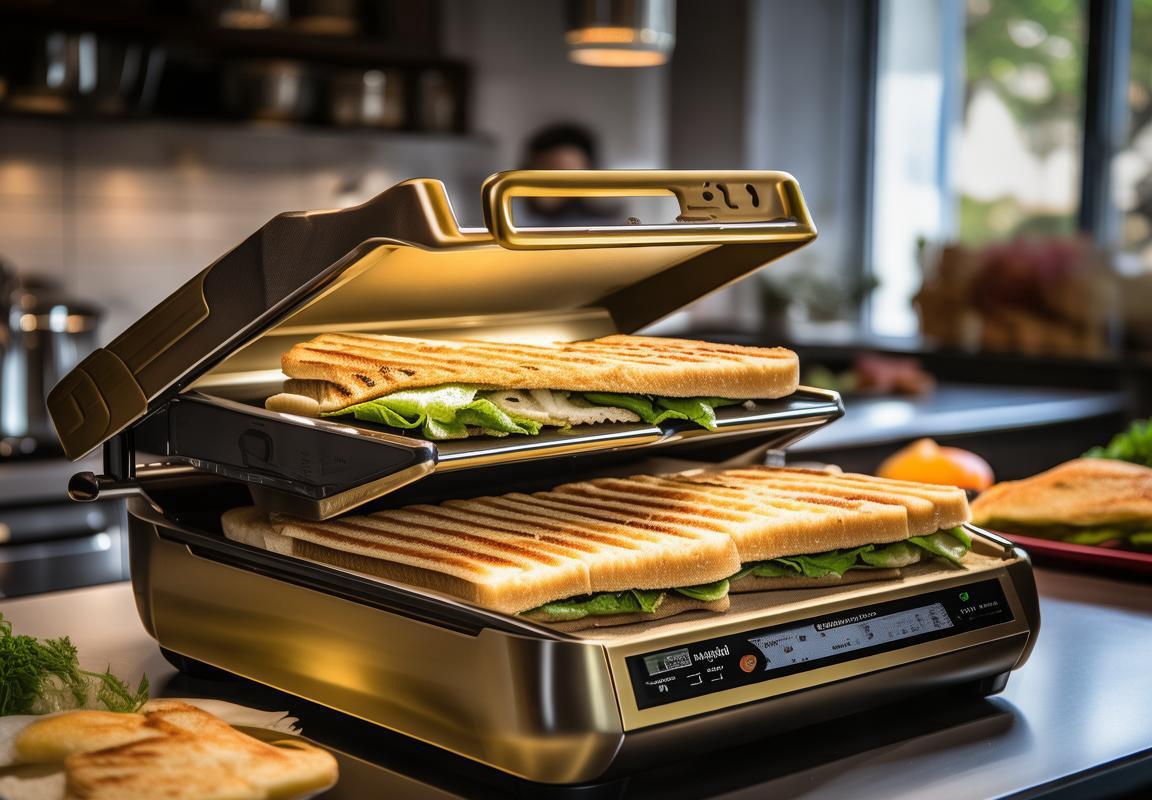
Market Trends and Consumer Preferences
In recent years, the kitchen appliance market has seen a surge in demand for products that offer both functionality and convenience. This shift has been driven by several factors, including changing consumer lifestyles, the rise of health-conscious eating habits, and the growing popularity of international cuisines. Let’s delve into some of the key market trends and consumer preferences shaping the kitchen appliance industry.
-
Integration of TechnologyConsumers are increasingly looking for kitchen appliances that integrate advanced technology. Smart appliances, for instance, are becoming more popular as they offer remote control capabilities, energy efficiency, and connectivity with other smart home devices. From smart ovens that can be programmed from a smartphone to refrigerators that can order groceries, technology is making its mark in kitchen appliances.
-
Health and WellnessThere’s a significant trend towards healthier eating, which is reflected in the types of appliances consumers are purchasing. Appliances like slow cookers, air fryers, and juicers are gaining traction as they allow for healthier cooking methods that reduce fat and calories. Moreover, there’s a preference for appliances that can help track nutritional information, such as smart blenders that can scan ingredients and suggest recipes.
-
Compact and Multifunctional AppliancesWith smaller living spaces and busier schedules, consumers are gravitating towards compact appliances that can perform multiple tasks. For example, a single countertop appliance that can function as both a blender and a food processor is highly appealing. These multifunctional devices save space and reduce the need for multiple gadgets.
-
Sustainability and Energy EfficiencyThe environmental impact of products is a growing concern for many consumers. As such, there’s a strong preference for appliances that are energy-efficient and have a lower carbon footprint. Energy Star-rated appliances are particularly sought after, as they meet strict efficiency guidelines and can lead to significant cost savings over time.
-
International FlavorsThe globalization of cuisine has influenced kitchen appliance preferences. Consumers are more likely to invest in appliances that can help them replicate dishes from various cultures. This includes products like pizza ovens, pasta makers, and coffee machines that cater to specific international culinary traditions.
-
Durability and LongevityAs the cost of kitchen appliances can be substantial, consumers are looking for products that offer long-term value. Appliances with high-quality materials and robust construction are more appealing. The expectation is that these products will last longer, reducing the need for frequent replacements.
-
Personalization and CustomizationToday’s consumers are looking for ways to personalize their appliances. This can range from choosing custom colors for appliances to selecting features that cater to specific cooking styles or dietary needs. Brands that offer a level of personalization in their kitchen appliances often see increased customer loyalty.
-
Easy-to-Use InterfacesThe user experience is a crucial factor in appliance purchasing decisions. Consumers are drawn to appliances with intuitive interfaces and straightforward controls. The desire for ease of use is particularly strong among older adults and those with disabilities, who appreciate appliances that are accessible and require minimal technical knowledge.
-
Online Reviews and RecommendationsIn the digital age, online reviews and recommendations play a significant role in shaping consumer preferences. Many consumers turn to social media, review sites, and blogs to gather information about new appliances. Positive reviews and word-of-mouth can significantly influence buying decisions.
-
Price vs. PerformanceDespite the trend towards health, sustainability, and technology, price remains a key consideration. Consumers are often looking for the best balance between cost and performance. Appliances that offer high-quality features at a reasonable price point tend to dominate the market.
These market trends and consumer preferences reflect the evolving landscape of the kitchen appliance industry. As the demand for innovative, efficient, and user-friendly appliances continues to grow, manufacturers are responding with products that cater to the diverse needs and tastes of consumers worldwide.
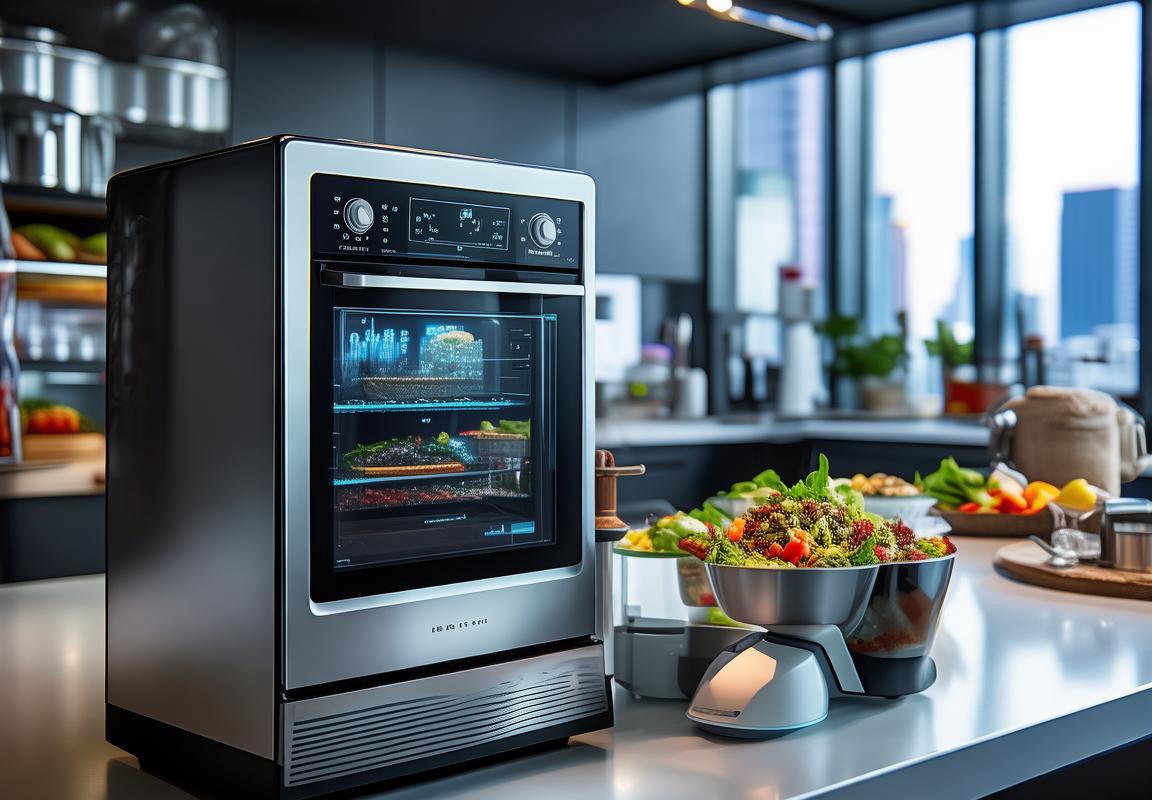
The Impact of NSF Certified Panini Presses on the Industry
In the bustling kitchen appliance industry, NSF certified panini presses have emerged as a beacon of quality and innovation. These appliances are not just a trend; they are reshaping the market and influencing consumer choices. The impact of these certified presses extends far beyond the countertop, affecting suppliers, manufacturers, and the overall industry landscape.
The integration of advanced technology into NSF certified panini presses has significantly changed how consumers perceive and use these devices. With features like adjustable heat settings, non-stick surfaces, and sleek designs, these presses offer a level of precision and convenience that was once unattainable. This shift has encouraged other appliance manufacturers to elevate their game, pushing the industry towards higher standards of quality and safety.
As consumers become more health-conscious, there’s been a growing preference for kitchen appliances that can facilitate healthier cooking methods. NSF certified panini presses cater to this demand by providing an alternative to frying and grilling, which can be high in fat and calories. This focus on health has not only increased the popularity of these presses but has also spurred the development of similar products that promise low-fat cooking.
The demand for NSF certification is a testament to the importance of trust and reliability in the kitchen appliance market. Consumers are increasingly looking for assurance that the products they purchase meet specific safety and performance standards. This certification adds a layer of credibility that can differentiate a product in a crowded market, making NSF certified panini presses a go-to choice for many.
The industry’s response to the rise of NSF certified panini presses has been multifaceted. Manufacturers have invested in research and development to incorporate NSF’s rigorous certification standards into their production processes. This has led to an industry-wide push for better materials, improved manufacturing techniques, and enhanced user experiences. Suppliers, too, have had to adapt by providing components that meet the stringent criteria set by NSF.
The certification process itself has become a benchmark for quality. It’s not just about meeting standards but also about exceeding them. This competitive edge has encouraged innovation and has spurred a wave of product differentiation. From smart features that allow for remote temperature control to presses that are easy to clean and maintain, the industry is evolving to meet the needs of the discerning consumer.
From a distribution standpoint, the presence of NSF certified panini presses has changed the way retailers approach their inventory. Shelves are no longer filled with generic products; instead, they are stocked with appliances that stand out due to their certifications. This has led to better organized and curated shopping experiences for customers who are now more informed about the products they are purchasing.
The impact of NSF certified panini presses is also felt in the service sector. Appliance repair shops are seeing an increase in demand for specialized parts and training for technicians who can service these high-quality appliances. This specialization not only extends the life of the products but also supports the ongoing relationship between the consumer and the manufacturer.
In terms of global trends, the popularity of NSF certified panini presses is a reflection of a broader movement towards international standards and certifications. As consumers travel more and expose themselves to different culinary cultures, they bring back a desire for quality appliances that can replicate these experiences at home. This has opened up new markets for manufacturers and has created opportunities for cross-border collaboration.
In conclusion, the influence of NSF certified panini presses on the industry is profound. It has sparked innovation, raised the bar for quality, and reshaped consumer preferences. The ripple effects are seen across the entire industry, from the initial design stages to the end-user experience. The success of these presses is a clear indicator that the industry is evolving to meet the demands of a modern, health-conscious consumer who values both quality and convenience.
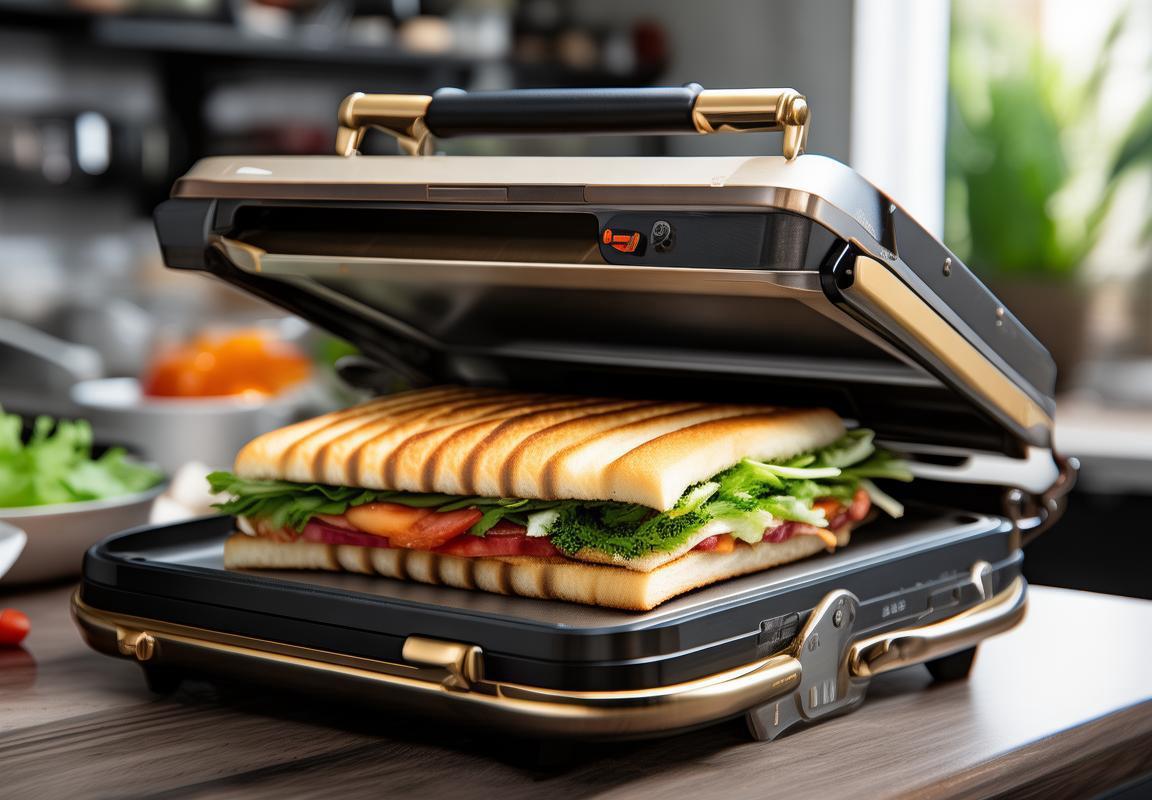
Conclusion: Why NSF Certified Panini Presses Are a Wise Investment
In the world of kitchen appliances, the rise of the panini press has been nothing short of a game-changer. These compact, versatile devices have not only found their way into countless homes but have also significantly reshaped the industry. The adoption of NSF certified panini presses has been particularly influential, offering a blend of quality, safety, and innovation that has won over consumers and propelled the market forward. Let’s delve into the multifaceted impact these appliances have had on the industry.
The demand for convenience and quality cooking tools has surged, and NSF certified panini presses have answered the call. These appliances are not just a trend; they represent a shift in consumer expectations. They are seen as a symbol of reliability and a commitment to health and safety, which is a stark contrast to the more generic and unregulated appliances that once dominated the market.
One of the most notable impacts is the standardization of quality. With NSF certification, manufacturers are forced to adhere to strict guidelines that ensure their products meet certain performance and safety criteria. This has led to a higher overall quality in the panini press market, with consumers now expecting more from their kitchen gadgets.
The industry has also seen a rise in innovation, as manufacturers strive to offer unique features that differentiate their products from the competition. From adjustable temperature controls to non-stick surfaces that require minimal oil, these innovations are not just about convenience but also about health. Consumers are increasingly looking for appliances that not only make cooking easier but also promote healthier eating habits.
Moreover, the rise of NSF certified panini presses has sparked a trend towards sustainability. As consumers become more environmentally conscious, they are seeking out appliances that are energy-efficient and have a lower carbon footprint. The industry has responded by producing panini presses that are not only energy-saving but also made from recyclable materials.
The impact on the industry is also evident in the way it has influenced distribution channels. Retailers and online marketplaces are now more selective about the products they offer, often prioritizing NSF certified appliances. This shift has led to a more discerning consumer base, as shoppers are now more likely to research and compare products based on their certifications and features.
In terms of pricing, the introduction of NSF certified panini presses has also had a notable effect. While these appliances may carry a higher price tag due to their superior quality and certifications, they often offer better value in the long run. Consumers are willing to invest in these products because they know they are getting a reliable and durable appliance that will last.
The industry has also seen an increase in cross-border collaborations and partnerships. As the demand for NSF certified panini presses grows, manufacturers are looking to expand their reach and tap into new markets. This has led to a more interconnected global industry, with knowledge and technology being shared across borders.
The impact of NSF certified panini presses on the industry is not just about the products themselves; it’s about the ripple effect they have created. They have prompted a reevaluation of what it means to be a quality kitchen appliance, and they have set a new benchmark for what consumers expect from their kitchen tools.
In conclusion, the industry has been transformed by the introduction of NSF certified panini presses. They have raised the bar for quality, encouraged innovation, and driven a shift towards sustainability. As the market continues to evolve, it’s clear that these appliances are not just a passing fad but a wise investment for both consumers and the industry as a whole.